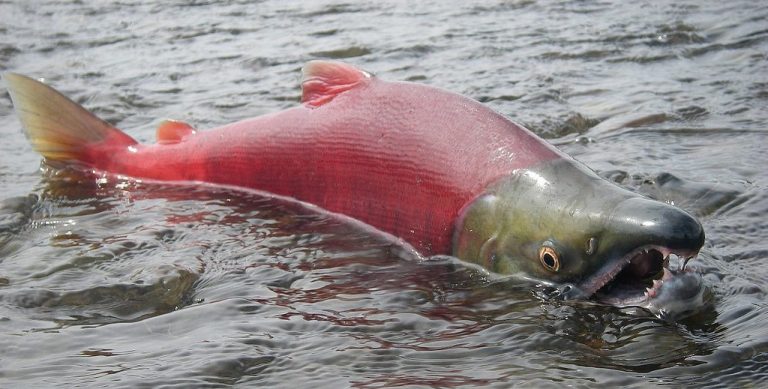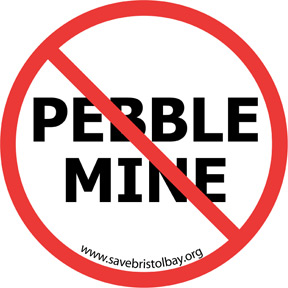As an unintended consequence of last year’s election, the developers of the proposed Pebble Mine in Bristol Bay got what they’ve been praying for since 2014 when they resorted to delay tactics and litigation to prevent the U.S. Environmental Protection Agency (EPA) from finishing its work that would protect the greatest wild salmon fishery on Earth.
After all, I can’t imagine too many people went into the voting booth thinking “I’m voting for him, because he’ll build the Pebble Mine.” at the top of their list. But, unintended or not, the consequences are very real. In a move that doesn’t really scream “America first,” the new leadership at EPA has sided (and settled) with a small-time Canadian mine promoter over science, facts, Alaska Natives, commercial fishing interests, anglers and hunters, the overwhelming majorities of Bristol Bay residents and Alaskans statewide, and millions of Americans who participated in the public process that led to EPA’s common-sense proposed restrictions on disposal of mine waste in two of Bristol Bay’s most productive watersheds.
“Protecting Bristol Bay from the Pebble Mine has been a priority issue for the hook-and-bullet community for 10 years. This was a real test for President Trump, who said all the right things to sportsmen during the election,” said Scott Hed, the director of the Sportsman’s Alliance for Alaska.
“This is a direct assault on our values. America’s hunters and anglers are extremely disappointed but we will not let up in the fight to protect Bristol Bay.”
Friday, May 12, 2017 in The Hill
Summary of important takeaways from the settlement agreement
- EPA will begin a process within 60 days to consider withdrawing the 2014 Clean Water Act proposed restrictions on disposal of mine waste in Bristol Bay.
- There will be opportunity for public participation – be ready to take action.
- Pebble must begin permit application process within 30 months. If it does so, EPA agrees not to use Section 404c of the Clean Water Act until 48 months from date of settlement or until a Final Environmental Impact Statement is issued (whichever comes first). Basically, EPA is tying its own hands and limiting when it can use the Clean Water Act to address these concerns in Bristol Bay.
- EPA may use the findings of the Bristol Bay Watershed Assessment (BBWA) without limitation. This is an important point, because the BBWA underpinned EPA’s decision to invoke Section 404c of the Clean Water Act and place the proposed restrictions on disposal of mine waste in Bristol Bay. The BBWA may be used during the course of permit processing and EPA oversight of those applications. Loss of the BBWA would have made a bad deal even worse.
Other items of note related to the settlement include:
- Pebble’s CEO is in line for a major bonus due to the settlement, and his former law firm will receive over $15 million for work on the case.
- As this was an out of court settlement, it can accurately be considered a “back room deal” that cut out the public – including Alaskans most affected by this controversy. Extremely ironic, one would say hypocritical, as EPA Administrator Pruitt said in March 2017 that the “…days of sue and settle…have ended.” Source: U.S. Chamber of Commerce
While many people felt that the battle had been won, we warned that Pebble was down but not out (see SAA Update from March, 2015). The settlement of Pebble’s lawsuit with the EPA means that we will need to fight again for Bristol Bay. The resolve of the diverse coalition aligned against Pebble is still intact, and will be fully engaged as this plays out.
One thing we will need to vigilantly watch for is any effort to fast-track the permitting process that Pebble will eventually undertake. After all, Pebble cried all along that they wanted to be subject to a “normal” permitting process. They should be held to that standard.
Finally, Pebble is talking about applying for a mine that will be “significantly smaller with demonstrable environmental protections.” Alaska Dispatch News ran this story. However, EPA science says a small mine has the same problems as a large one – it will poison water and fish and hurt existing industries down river. With the low-grade ore in the Pebble deposit, no one in their right mind would put money into a small mine that requires astronomical up-front investment because the location is so remote. This mine has to be huge in order to make money. Pebble is also trying to form an advisory panel, including offering significant financial compensation to those it is inviting to participate.
Pebble has always been, and will always be, the wrong idea in the wrong place.
TAKE ACTION: Tell the EPA that Bristol Bay must be Protected!
Putting America first should mean protecting the world’s most productive wild salmon fishery, the $1.5 billion in annual economic impact it provides, and the 14,000 jobs it supports. Click here to tell EPA Administrator Scott Pruitt that we won’t risk Bristol Bay for empty promises from the foreign backers of Pebble Mine.


